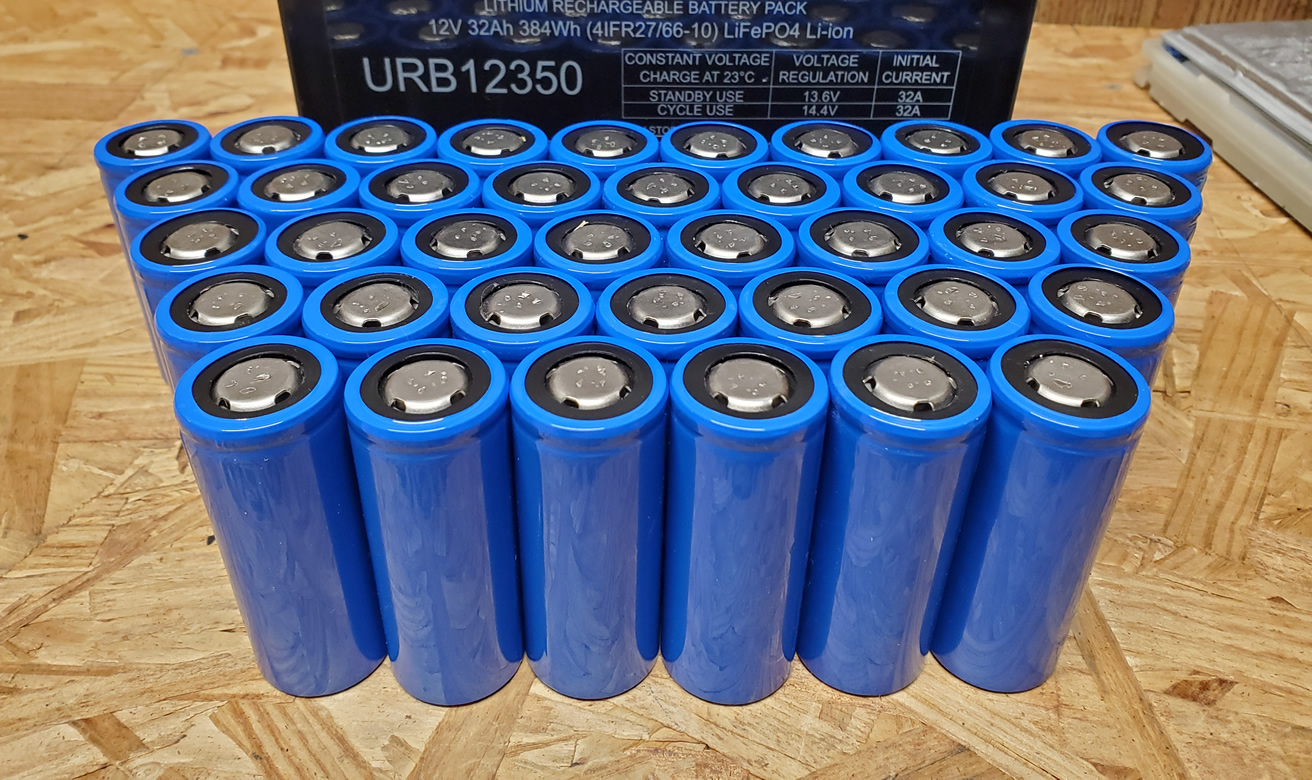Just a quick recap for my self: cell is the ones that make up the voltage combined so in the current design all 18650's under the 7 groups. The 18650's them self how are they referred to when in a s7p10 config for example ?
A cell is the smallest base component that creates the voltage/current. Some times cells are not exterior. An example would be a 12V lead acid battery, that has 6 cells internally.
However, with 18650's, or similar types of batteries, are considered the cells when using them in groups. Same is said for AA, AAA, C, D cells as well. If they are used singularly, they called batteries. When they are used in groups, especially increasing voltage, they are called cells.
Groups connected to increase voltage/capacity would be 7s10p. This is also called a 'string' of cells.
Just to make clear if I have s7p10 pack and one or 2 18650 fails in any "cell" that would be ok for me the fuse wire wil cut them of. I
If a cell goes "short circuit", it
may blow the fuse. It will only blow the fuse if it pulls a large amount of current to cause the fuse to pop. Not
all cells will fail this way, though. Others may just loose capacity rapidly. This causes a cell to get hot during charging. Not that it pulls more current, it just burns the energy sent to it into heat. This is why thermal sensors/probes are recommended as well.
Brings out a interesting question though how many 18650 can you let fail before you would go in and replace?
You don't want to let any of them stay in the pack failed because it will cause other issues. Even if the fuse blew and is never used again. It causes capacity imbalances.
If you have 7s10p, and each cell (individual 18650) is 2000mAh, that means that each parallel group of 10 is 20Ah. If a single cell dies and is disconnected, then a single pack in the string now is 18Ah. So during charging, that 18Ah pack will reach full capacity before the other 6. Now the bms balancing has to kick in to burn off the energy from that pack to maintain the voltage until the other 6 can catch up.
Capacity, Ah and mAh, is similar to a bucket. If you have a 2L bucket vs a 1L bucket, the 1L bucket will get filled up faster than the 2L bucket given that the flow is 1L/m. To keep them balanced, you poke a hole in the top of the 1L bucket to let water out until the 2nd 2L bucket is full. The water that is let out is wasted and cannot be reclaimed (this is the simplest form, and there are ways to reclaim, but will discuss it here atm. and it's not recommended really).
So, you fix the problem before it becomes more of a problem. If those cells aren't bled off by burning the energy then the lower capacity cells could become over charged and cause a fire.
Still though I would expect a BMS to do both actually but from this I deduce that proper BMS do this (ie. smart etc) and cheap one's just wait till overcharge happens then cuts off?
There are different types of BMS's, yes. Some just disconnect. Some tell the charger to back off. Others can divert the excess energy somewhere else. Some have all these features, some have none.
Still would suspect these 2 functions to be in all BMS and am surprised for example there is not even a BMS with charge controller in one.
There are charge controllers that have BMS's, to a degree. They are a lot more expensive, though, than having the units separate. We're talking into the several of thousands of USD$$
Why would it not work in practice? Logic would dictate fluctuating input is more likely to break it even though designed for it.?
It should work in practice. Yes. But I'm not sure how well it will work. Only one way to test it out

The fluctuating voltage really doesn't make a difference on the components. If you compare again to a water hose, then you could say the output has a spray nozzle that allows 1L/h. The source provides up to 5L/h. as long as the pump doesn't drop below 1L/h, the nozzle output won't be affected. But if the pump does drop below 1L/h, then then output pressure drops at the nozzle.
Btw is there a device capable of dealing with input power/monitoring/failsafe of the whole battery? They all communicate to each other I figure why seperate them.
Yeah, the Batrium BMS is one of these types of units. It can communication with other components in the system using the CAN protocol.




